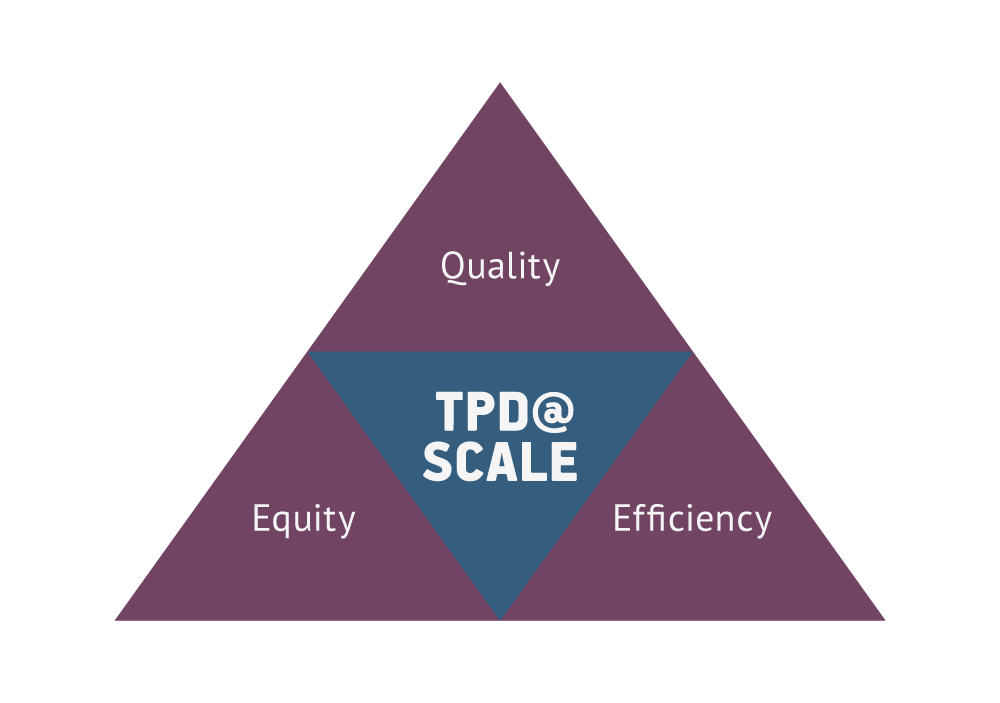TPD@Scale concepts and principles
1.2 TPD@Scale principles
Start by reading this mini case study of TPD@Scale in Honduras.
|
Mapping teachers’ access to ICTs for TPD@Scale In Honduras the GPE – KIX project is adapting and scaling teacher professional development mediated by technologies, to improve the access to quality training for all teachers in the country. First, field research mapped teachers’ internet connectivity, possession of digital devices and geographical location (rural / urban). This mapping identified three broad groups of teachers to consider in planning large scale ICT mediated TPD: (i) teachers who have high access to the internet and live in urban centres; (ii) teachers with limited internet access who live in semi-urban/rural areas, and (iii) teachers with very occasional internet access, basic smartphones, who live in rural areas. These teachers work in the most socioeconomically and culturally disadvantaged areas of the country. Three different digital environments for TPD are being used to reach the three groups of teachers: (i) the Ministry of Education virtual platform (ibertel) based on Moodle (ii) a Moodle application for smartphones, and (iii) WhatsApp. |
In this brief example, careful consideration of teachers’ access to ICTs makes TPD more equitable and efficient, and scalable.
The example from Honduras shows how programme designers can plan from the start to achieve the three core principles of TPD@Scale:
- Equity: fair access to learning for teachers that helps them respond to the learning needs of all their students, so that student participation, learning and achievement will increase.
- Quality: movement in teachers’ practice that will enable greater student learning.
- Efficiency: the use of resources to ensure that desired outcomes are achieved in an equitable way.
For teacher professional development, there is always a ‘balancing act’ between these three elements.

For instance, to reach teachers who work with marginalised groups, so these teachers have equitable access to TPD that helps them improve student learning, it might be necessary to have TPD that costs more and requires more contact time – this would mean
higher quality, but less efficiency.
